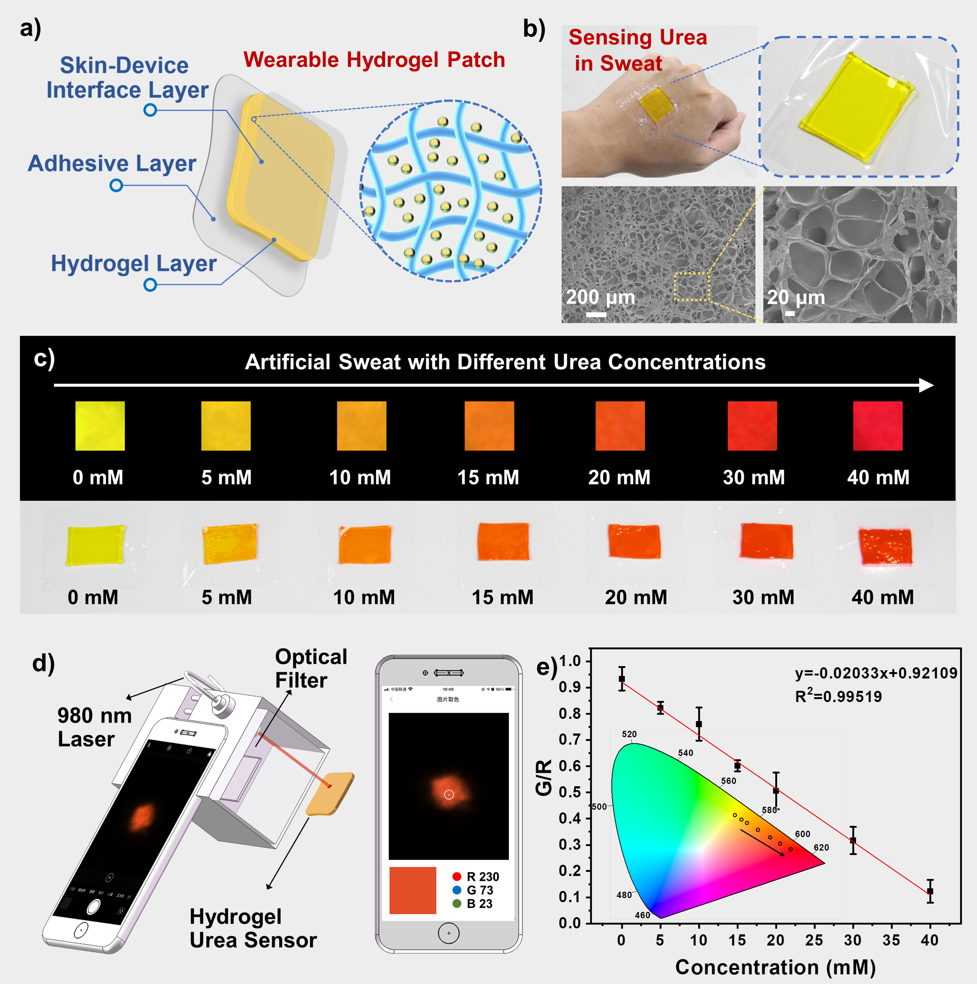A wearable sensing patch was developed by a research group from the Hefei Institutes of Physical Science (HFIPS) of the Chinese Academy of Sciences. Also, a quick quantitative analysis of urea was realized by them.

Designed wearable hydrogel sensing patch and response of hydrogel sensing patch to urea under 980 nm excitation and daylight. Image Credit: KANG Xiaohui
The study outcomes were reported in the journal Analytical Chemistry.
Urea, which is excreted via urine, saliva, sweat, and blood, is known to be a significant indicator of renal function in clinical diagnosis. Efficient detection of urea levels is a vital factor for the early detection of diseases.
Wearable fluorescence-based sensors have gained a lot of attention from users, but conventional fluorescent hydrogels are excited by short wavelengths. Spontaneous and background fluorescence could easily interrupt the detection of biological samples.
Hence, upconversion nanoparticles (UCNPs), which could remove the self-fluorescence and background interference of biological samples, are an efficient strategy for detecting human biomarkers with high sensitivity.
We embedded an upconversion optical probe into a three-dimensional porous polyacrylamide (PAM) hydrogel, and combined the patch with a smart phone color reader.
Changlong Jiang, Study Lead and Professor, Hefei Institutes of Physical Science, Chinese Academy of Sciences
The PAM hydrogel sensor was based on an upconversion optical probe, which was made of p-dimethylamino-cinnamaldehyde (p-DMAC) and UCNPs.
As a result of the internal filtration effect, the red product generated by the reaction of urea and p-DMAC satisfied the green fluorescence of the UCNPs and resulted in the upconversion fluorescence to alter from yellow to red, thus realizing the urea’s fluorescence detection.
Based on this, an adaptable wearable sensor was fabricated by integrating PAM hydrogel, and a portable sensor platform was built by making use of 3D printing technology.
The boundaries of detection of the self-designed upconversion fluorescent probe and the hydrogel sensor were just 1.4 μM and 30 μM, respectively. They were much lower compared to the urea content in sweat, signifying higher sensitivity.
According to the research group, the sensor patch design enables for precise and convenient sensing strategy for the detection of biomarkers present in body fluids and has the ability to be developed into a device for offering disease warning and clinical diagnosis.
This study was financially supported by the Research of National Key and Development Program of China, the National Natural Science Foundation of China, the Key Research and Development Program of Anhui Province, and the Natural Science Foundation of Anhui Province.
Journal Reference:
Hu, B., et al. (2023) Multiplex Chroma Response Wearable Hydrogel Patch: Visual Monitoring of Urea in Body Fluids for Health Prognosis. Analytical Chemistry. doi.org/10.1021/acs.analchem.2c03806.